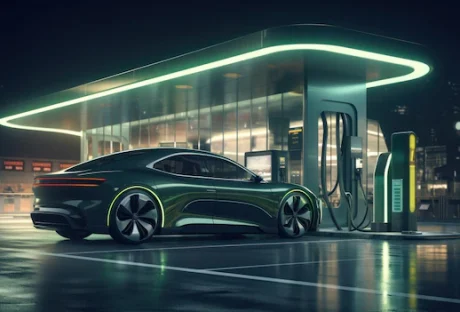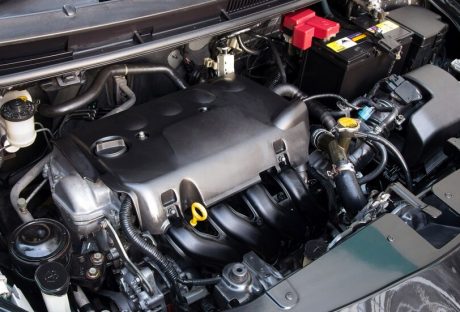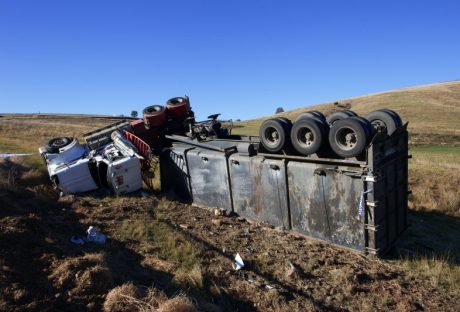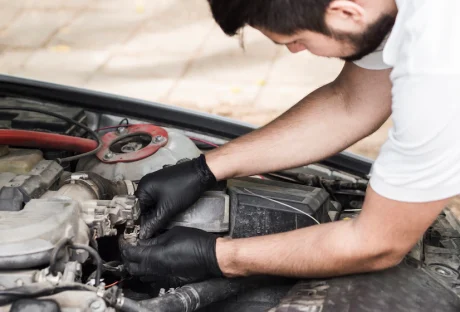Ferrari is an Italian luxury sports car manufacturer and brand that is well-known for its prancing horse logo, Rossa Corsa (or “race red”) color, and sex appeal. Ferrari is still a maker of motorsports and is now a public-trade company.
Enzo Ferrari, a racer and businessman, established Scuderia Ferrari in 1929 in Modena, Italy, with the goal of supplying race cars to Alfa Romeo. Alfa Romeo internalized its racing division in 1938, and Ferrari oversaw the new division for a brief period of time.
After leaving Alfa Romeo in 1939, Enzo Ferrari established Auto Avio Costruzioni, a company that produced tools until 1940, when Ferrari introduced the Tipo 815, a race car. Ferrari relocated its factory and headquarters to Maranello in 1943, a few years later.
The first road car to bear the Ferrari badge, the 125 S hit in 1947. But Ferrari wasn’t an official automaker until Enzo Ferrari began selling vehicles under his own brand.
In this article, we will be getting to the bottom of who owns Ferrari at present. Here is all the information you need on the owners of Ferrari.
Early Days Of Ferrari

The current Prancing Horse got its start in 1939 when Enzo Ferrari founded Scuderia Ferrari, a racing team under Alfa Romeo. Following World War II, Enzo Ferrari went out on his own and started producing cars under the Ferrari brand. Production of the first Ferrari-badged vehicle began in 1947.
Up until 1960, Ferrari was a private holding business. Then, it went public in 1960 as Società Esercizio Fabbriche Automobili e Corse, or SEFAC S.p.A. Soon after, Fiat acquired a portion of the business and significantly raised its investment.
Does Fiat Own Ferrari?

No, but Fiat did once own a sizable portion of Ferrari. In 1969, Fiat S.p.A., also known as Fabbrica Automobili Torino, or the Italian Automobile Factory of Turin, acquired a 50% stake in Ferrari. Fiat never owned the entirety of Ferrari, even though it increased its stake to 90% in 1988 (Enzo Ferrari owned the remaining 10%). This was the arrangement until 2014, when Ferrari S.p.A. and FCA split apart by Fiat Chrysler Automobiles N.V. October 2015 marked the start of the official separation, which ended in January 2016.
Ferrari N.V. was formed as the Ferrari Group’s new holding company during this separation. FCA sold its ownership share, and the business was listed on the New York Stock Exchange. Piero Ferrari, the son of Enzo Ferrari, remained the owner of the 10% of the company’s shares that his father had previously owned.
Ferrari Shareholders: What Company Owns Ferrari?

- Public (67.09%)
- Exor N.V. (22.91%)
- Piero Ferrari (10%)
The general investing public is Ferrari’s principal shareholder. Enzo Ferrari’s second son Piero also owns a sizable portion of the business, and Exor N.V. completes ownership. The owners of Exor N.V. are the descendants of Giovanni Agnelli, one of the original founders of Fiat.
Ferrari is still headquartered in Maranello. They take great pride in being one of Formula 1’s most enduring and successful competitors. They simultaneously hold the position of being a genuinely world-class automaker. Even with its fame, it is still a relatively boutique operation that only produces a small number of cars annually. This is reflected in Ferrari’s valuation, which places it among the top ten automakers in the world by market capitalization at more than $51 billion.
The Alfa Romeo Connection

Despite having a long history together, Ferrari does not own Alfa Romeo. Although Alfa Romeo is owned by Fiat Chrysler, Alfa Romeo and Ferrari were once one and the same.
After all, it was under the Alfa Romeo name that Enzo Ferrari initially established the Scuderia Ferrari racing team. Although Enzo Ferrari started competing for Alfa Romeo in 1920, he founded Scuderia Ferrari in 1929, which later became Alfa Romeo’s official racing team. But after leaving Alfra Romeo in 1939, Enzo founded his own independent racing team in 1948 and didn’t look back.
Ferrari: The Legendary Sports Car Phenomenon

Millionaire and passionate Ferrarista Robert Herjavec has described the experience cleverly. “This is where the Ferrari world is kind of like the Vatican. It’s very mysterious. There are a lot of trinkets you have to wear and a lot of rings you have to kiss.”
Owning a Ferrari, according to Hollywood and some urban legends, is either a cliché for midlife men or the height of kitsch, a sign of the nouveau riche who have too much money and too little taste. Owning a Ferrari is actually a very different animal from owning any other kind of vehicle.
Purchasing a Ferrari is not like purchasing a typical car. You don’t simply walk into a dealership with a wallet full of hundreds of thousands of dollars and walk out with one of the brand’s vehicles. Concerning a limited edition series, the situation usually becomes even trickier.
From the time you decide to buy a Ferrari to the point at which you have to decide whether to buy another one, Ferrari controls every aspect of ownership. In other words, to paraphrase Herjavec from a 2014 Wired interview, Ferrari chooses you, not the other way around. You typically consider yourself fortunate to be among the privileged few.
Enjoying the “epitome of motor technology today” (as Herjavec put it) is subject to a rigorous set of regulations. This has sparked numerous online debates and thought pieces. The fine print on the bill of sales and the controversy surrounding the introduction of limited edition cars largely hint at the precise nature of these regulations.
Owning A Ferrari: Trivia

As previously stated, no matter how full your wallet is with cash, you don’t just walk into a Ferrari dealership and expect to drive off in a brand-new car. You can forget about going into the dealership to purchase a limited-edition car.
While the majority of car dealerships will check your credit to see if you can afford the payments on the vehicle you’re about to purchase from them, Ferrari goes above and beyond that. It’s said that men over 40 who have a clean record and a good reputation are preferred. Because simply being wealthy does not qualify you to be seen behind the wheel of a Ferrari.
Wrapping Up
Even with ownership shifts over time, Ferraris are still manufactured in Maranello, Italy. Ferrari has never forgotten what sets its brand apart: superbly designed, finely engineered supercars.
If you have thoughts to share or questions to ask about who owns Ferrari, please leave a comment below. We would love to hear from you!
Learn More About:






















